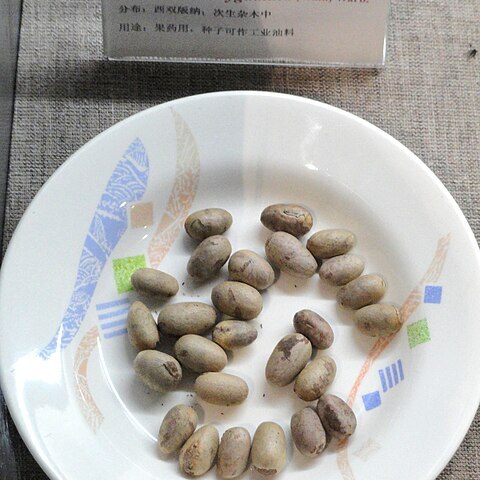Trees to 25 m tall, 20-40 cm d.b.h.; bark grayish white; branches spreading, rarely drooping; twigs brown, nearly glabrous, with light brown ovate lenticels. Leaves distichous or in 3-5 rows; petioles 1-2 cm, pubescent, glabrescent; leaf blade narrowly elliptic or oblong-lanceolate, 9-23 × 2.5-7.5 cm, papery, both surfaces early glabrescent, base attenuate to broadly cuneate, apex acute or acuminate; lateral veins 7-14 pairs, tertiary veins obscure. Plants dioecious. Male inflorescences axillary or in axils of deciduous leaves, paniculate, 8-15 cm, nearly glabrous; bracts elliptic, minute, pubescent, caducous. Male flowers nearly clustered; buds (sub)globose, 1.5-2 mm in diam., as long as pedicels, glabrous; perianth 2-or 3(or 4)-lobed, at anthesis cleft to ca. 1/2; synandrium globose or depressed globose, sessile; anthers 8-15, free. Female inflorescences often inserted on older branches, 3-6 cm, glabrous; peduncles stout. Female flowers ellipsoid, 2-3 mm; ovary ovoid, glabrous; style absent; stigma lobes rounded. Infructescences 5-10 cm. Fruit orange, ovoid or ellipsoid, 3-3.5(-4) × 1.5-2.5 cm, base sometimes narrowed; pericarp fleshy, 2-3 mm thick. Seeds glossy, light reddish brown when dry, ovoid, smooth; aril orange, completely enclosing seeds, sometimes very shortly imbricately laciniate. Fl. Aug-Oct, fr. Mar-May of following year.
More
A large tree. It can grow 5-30 m tall. The bark is reddish brown inside and has reddish sap. The leaves are broadly oval and 9-23 cm long by 3-9 cm wide. The leaves smell like mango. They are narrowly oval and shiny above. The flower buds are yellow and in branched groups. The fruit are oval and 3 sided. They have ridges along the back. The layer around the seed is fleshy and yellow.

